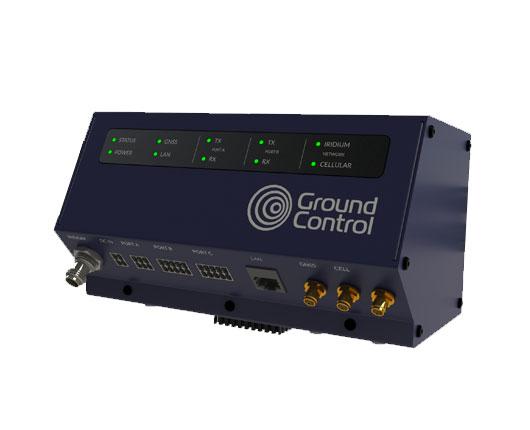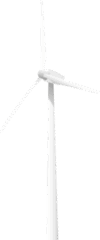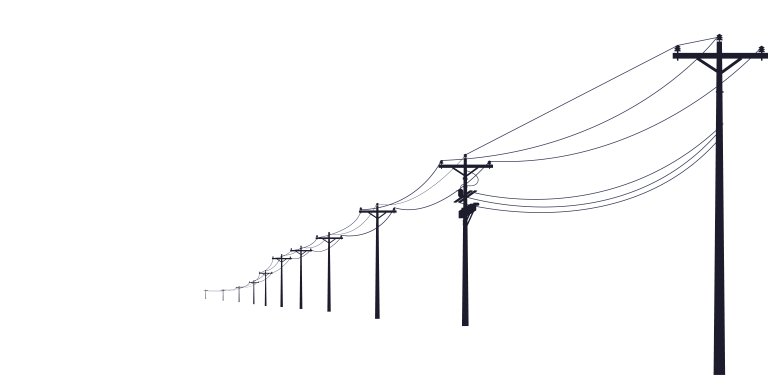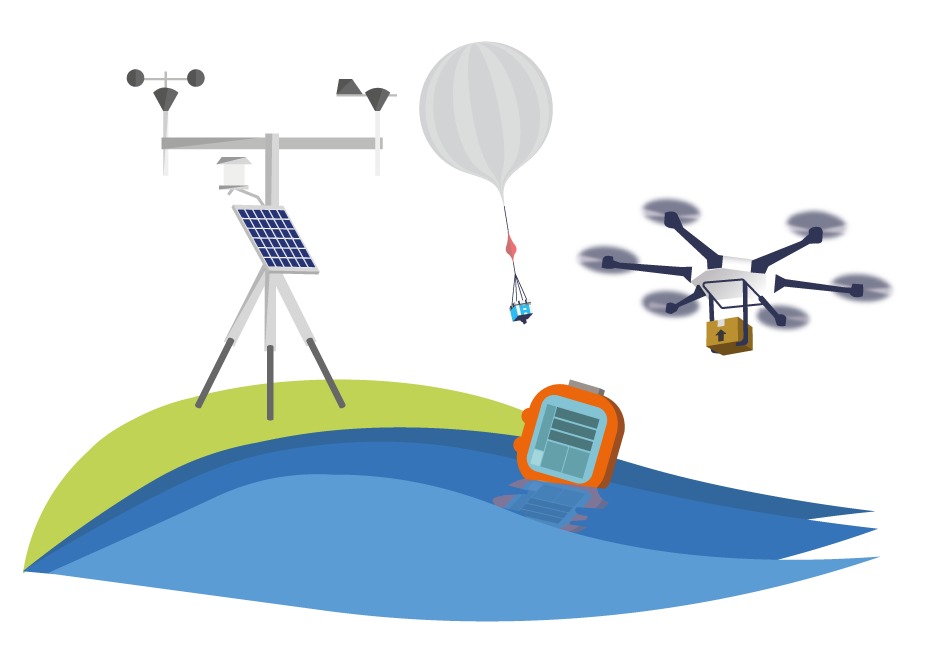We can now establish optimal communications to and from even the most inaccessible areas on land, on sea and in the skies, while contributing directly to the reduction of international carbon emissions.
Spearheading this momentous and necessary step change is Iridium, proudly designating itself as ‘the only truly global communications network’. Iridium’s Global Line of Sight programme is currently emphasising the versatility, efficiency and practicality of its satellite services with regard to unmanned aircraft systems, drones and other autonomous or remotely-piloted vehicles; and this initiative is, in turn, enthusiastically supported by Rock Seven (now trading as Ground Control), with integral products such as its RockBLOCK plug-and-play satellite communication solution.
RockBLOCK units are indispensable Internet of Things (IoT) devices, enabling all manner of autonomous assets to transmit Short Burst Data (SBD) messages between the equipment and centralised host computer systems. The range encompasses the RockBLOCK 9602 and the more compact RockBLOCK 9603, chiefly intended for use in contexts such as system integration or product development where space within an enclosure might be limited. Hosting an Iridium SBD modem, RockBLOCK effortlessly overcomes the limitations of Wi-Fi and GSM networks, and is capable of sending and receiving short messages from literally anywhere on Earth with a view of the sky.
RockBLOCK’s value to sectors such as Search & Rescue, ISR (Intelligence, Surveillance, Reconnaissance), Environmental Monitoring and Disaster Assessment, where rapid and reliable messaging is of the essence, is demonstrable. Here are some examples of the RockBLOCK in action.
Iridium Edge Solar
In addition to the RockBLOCK, Ground Control’s plug-and-play product range features a variety of other tracking and communications solutions, using the Iridium network, to enable data transfer to and from hitherto inaccessible areas. These include the RockSTAR two-way messenger, the RockFLEET global tracking device to drive efficiencies in fleet management, and the RockAIR tracking and messaging device, designed for easy mounting on the dashboard of light aircraft and vehicles.
In a meaningful new development, it was announced at the tail end of 2019 that Rock Seven (now trading as Ground Control) has been nominated as the beta partner for the new, solar-powered and competitively-priced Iridium Edge Solar tracking device, which is scheduled for launch in 2020. Offering easy wireless installation and an autonomous tracking facility, the set-and-forget Iridium Edge Solar is perfect for users requiring a simple, economical but completely reliable SBD tracking device supplying pole-to-pole connectivity.
Wingcopter
Wingcopter’s lightweight but robust VTOL drones are transforming processes and practices for customers in a broad variety of contexts – anything from the transportation of medical or aid supplies and the inspection of large-scale infrastructure, to forestry mapping and the creation of logistics chains to and from remote locations.
Wingcopter has been equipping its drones with RockBLOCK units. With their unprecedented range and speed, the VTOL drones are capable of flying into environments and territories with limited or zero GSM coverage, and the RockBLOCK’s ability to send and receive data from such locations means that users can reliably track a drone’s flight status with ease from their tablet or computer, regardless of the VTOL’s whereabouts.
RockBLOCK at High Altitudes
RockBLOCK units have also been fundamental components in esoteric, questing enterprises such as the LOHAN (Low-Orbit Helium-Assisted Navigator) spaceplane project, enacted by the Special Projects Bureau from the science and technology website The Register, aided by a team of volunteers. The project’s aim was to deploy a single meteorological balloon to raise the 3D-printed spaceplane to altitude – the rim of space – then release the craft and glide it back to a designated landing site using a combination of GPS and autopilot control.
The RockBLOCK proved indispensable as a means of transmitting GPS data and receiving ground commands when the LOHAN unit rose out of GRPS coverage range. Furthermore, a stipulation of the project was that an emergency mission abort protocol needed to be implemented in the event of the unit veering off course. Had this occurred, a message would have been communicated to the RockBLOCK via Rock Seven’s API, which enables remote systems to interact with the firm’s products, and this would have triggered the spaceplane’s self-destruct mechanism.
A similarly lofty demonstration of the RockBLOCK’s capabilities took place when a team comprising Andrew Ashe, Jerry Sandys and Peter Gibbs sent a balloon to near space, using code developed by the eminent computer scientist and senior software engineer Mikal Hart. In this instance, the RockBLOCK was used to successfully allow the team to track the balloon throughout its flight, as well as enabling them to recover its payload when the high-altitude craft returned to Earth.
The Microtransat Challenge
Proving that RockBLOCK products are just as much at home afloat as in the sky, the Microtransat Challenge is a transatlantic race for autonomous boats; but the competitive element is, in a sense, an adjunct to its real objective, which is to encourage the development, construction and refinement of such vessels. Two teams involved in the challenge, representing Epsom College and Southampton University, are finding the RockBLOCK to be an ideal IoT solution.
Teams from Epsom College have participated in the 2016, 2018 and 2019 challenges with the boats That’ll Do, That’ll Do Two and EC-Crossing, and in each case, a RockBLOCK unit has been put to work transmitting detailed telemetry data from each vessel as they have attempted to cross the Atlantic. Once an hour, the RockBLOCK has relayed each boat’s latitude and longitude position as well as providing updates on battery voltages and temperature readings inside the electronics bays. The RockBLOCK is also capable of sending a Mayday alert should any water be detected in the hull. The RockBLOCK has enabled teams to forward vessel updates to a PHP script which places a position marker on a rolling map on the college’s website as well as updating Twitter and allowing data to be stored in a Structured Query Language (SQL) database.
Ship Science students from Southampton University, meanwhile, have applied themselves to the design and construction of an autonomous, solar-powered vessel named Peruagus. A radical departure from most craft that have undertaken the Microtransat Challenge in previous years, the sturdy, self-righting Peruagus exclusively draws upon sustainable solar energy for propulsion and rudder control, and its modular composition has been devised specifically to allow all manner of different weather monitoring apparatus, power systems and superstructure configurations to be installed. As with the Epsom College vessels, a RockBLOCK unit is a prerequisite for transmitting exhaustive telemetry data from the Peruagus while also enabling the autonomous boat to receive waypoint instructions.
SEASCAMS2
RockBLOCK units are also providing sterling service at the heart of the SEACAMS2 project, a £17m, three-year undertaking jointly conceived by the universities of Bangor and Swansea to assist research and applications for low-carbon, marine-renewable energy opportunities in the convergence regions of Wales. Environmental monitoring specialists OSIL (Ocean Scientific International Ltd) are closely involved with the project and have supplied a network of three data buoys, each of which has a RockBLOCK unit installed.
The function of the buoys is to support the sustainability aims of the project by collating water quality, meteorological and oceanographic data from the waters around the North Wales coast. To this end, each buoy is equipped with a dual telemetry system; and the RockBLOCK units are a prerequisite for conveying the crucial information collected by the buoys in dependable, unbroken SBD transmissions from remote sea areas beyond the range of GSM networks.
Read more about our work with OSIL and the SEACAMS2 project.
As commerce, society and the ecology come to rely more and more upon the exchange of real-time data we can trust, Rock Seven (now trading as Ground Control) is blazing a trail for 24-carat connectivity from all corners of the globe.






